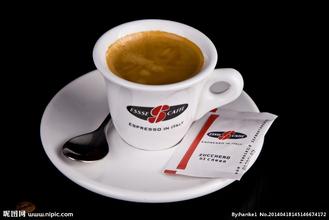Where can I buy the price and taste of Colombian Ramon coffee beans?
Introduction to Colombian Coffee beans
After taking office in 2002, Colombian President Uribe took a tougher right-wing line. FARC was vigorously besieged and suppressed by the government. The Revolutionary Armed Forces of Colombia killed Uribe's father in 1983. After Uribe came to power, the top priority was to fight against the Revolutionary Armed Forces of Colombia, which brought Colombia closer to the United States, and the United States gave more money to Colombia. Since 2000, in the face of the intensified crackdown by the government, the Revolutionary Armed Forces of Colombia (FARC) began to withdraw gradually. The tide of the left has risen one after another in South America in recent years, and Colombia is one of the few countries where the right is still in power.
Colombia in South America is the world's leading coffee producer and exporter. In recent years, due to global climate change, Colombia's crop production is often affected by bad weather and other factors, which makes its coffee production has been hovering at a low level. In order to restore Colombia's status as a "coffee power", scientists have been working on developing new varieties of coffee trees.
After the news of Napoleon I's invasion of Spain in 1808 spread to Colombia, the people of that place immediately launched an independence movement. On July 20, 1810, a large-scale uprising against Spanish colonial rule broke out in Bogota and the Governor of New Granada was arrested. In November 1811, representatives from all over the world organized Congress in Bogota, established the New Granada Joint Provincial Government, and declared independence on November 11. But Kundinamaka did not recognize the federation. At the end of 1812, the debate over the formation of a regime eventually led to civil war. It broke out again in 1814. In mid-1815, a large Spanish expedition arrived in New Grenada. Overthrew the United provincial government. In May 16, royalists took control of the whole of New Grenada. Spanish colonists made a comeback in 1815. On August 7, 1819, S. Bolivar led the insurgents to defeat the Spanish colonial army at the Battle of Boyaca and conquered Bogota on the 10th, ending Spanish colonial rule at the beginning of the 20th century. Colombia's economy developed, coffee and oil production increased, the textile and food industries developed, and transportation improved. In November 1903, the United States instigated Panama's independence from Colombia (see Panama's independence). At the same time, the United States and Britain invested heavily in Colombian oil, railways and coffee and banana plantations to plunder Colombia's wealth. After the outbreak of the capitalist world economic crisis in 1929, Colombia's exports of coffee and oil decreased, making people's lives even more difficult. In July 1930, the Communist Party of Colombia was founded. In the same year, E. Oraya Herrera was elected President (1930-1934)

Important Notice :
前街咖啡 FrontStreet Coffee has moved to new addredd:
FrontStreet Coffee Address: 315,Donghua East Road,GuangZhou
Tel:020 38364473
- Prev

Introduction to the flavor description of Ugandan coffee bean producing area with thick sour taste
Coffee bean production in Uganda (Uganda), Arabian coffee beans account for only 10% of the country's total coffee production, but it is enough to attract attention. The best coffee in Uganda is mainly produced in the mountains of Elgon and Bugisu along the Kenyan border in the north and Ruwensori in the west.
- Next

Introduction of Burundian coffee bean flavor Lonkasta red bourbon how to drink price Asian distributor
Burundi Coffee Bean introduction Burundi (Burundian) has the most diverse and successful coffee industry in the world, and has its own characteristics. Coffee in this country was introduced by Belgian colonists in 1930 and is now grown only on small farms. Unfortunately, many of these farms are on the border with war-torn Rwanda, putting pressure on coffee production. Cloth
Related
- Detailed explanation of Jadeite planting Land in Panamanian Jadeite Manor introduction to the grading system of Jadeite competitive bidding, Red bid, Green bid and Rose Summer
- Story of Coffee planting in Brenka region of Costa Rica Stonehenge Manor anaerobic heavy honey treatment of flavor mouth
- What's on the barrel of Blue Mountain Coffee beans?
- Can American coffee also pull flowers? How to use hot American style to pull out a good-looking pattern?
- Can you make a cold extract with coffee beans? What is the right proportion for cold-extracted coffee formula?
- Indonesian PWN Gold Mandrine Coffee Origin Features Flavor How to Chong? Mandolin coffee is American.
- A brief introduction to the flavor characteristics of Brazilian yellow bourbon coffee beans
- What is the effect of different water quality on the flavor of cold-extracted coffee? What kind of water is best for brewing coffee?
- Why do you think of Rose Summer whenever you mention Panamanian coffee?
- Introduction to the characteristics of authentic blue mountain coffee bean producing areas? What is the CIB Coffee Authority in Jamaica?

